
What You Need to Know about Air Compressor BMS Integration
October 22, 2025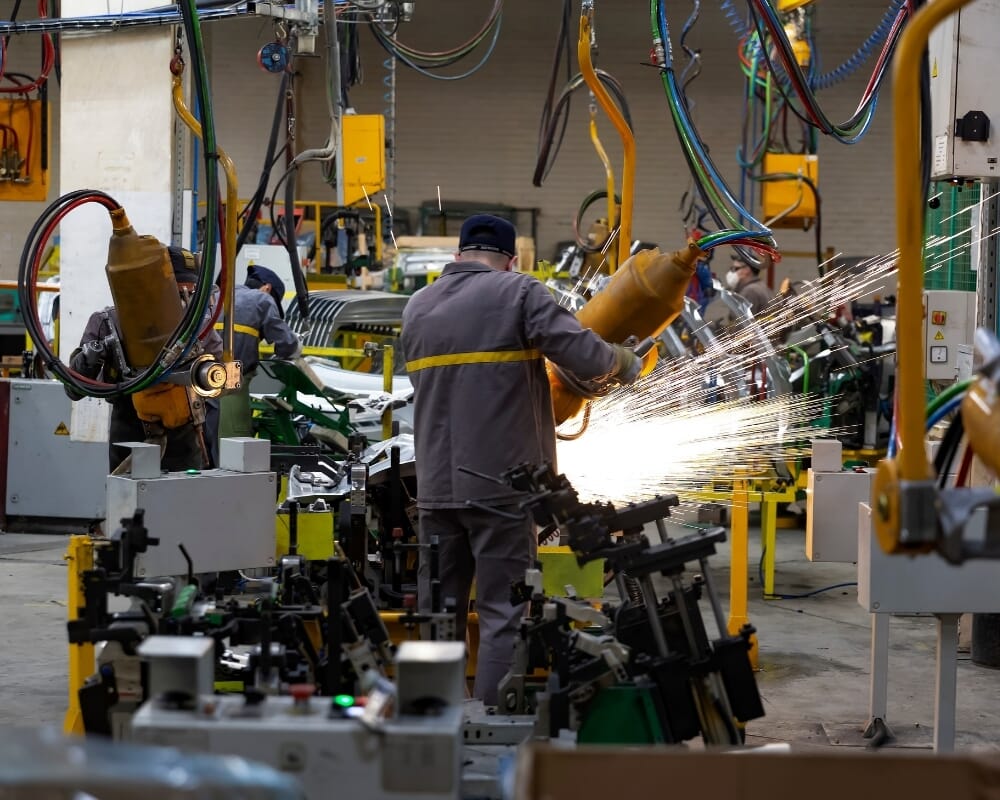
How a Multi-Compressor System Can Help You Reduce Compressor Downtime
November 5, 2025Five Questions You Need to Answer to Get Compressed Air Header Pressure Right
Kaishan USA | October 29, 2025 | Uncategorized
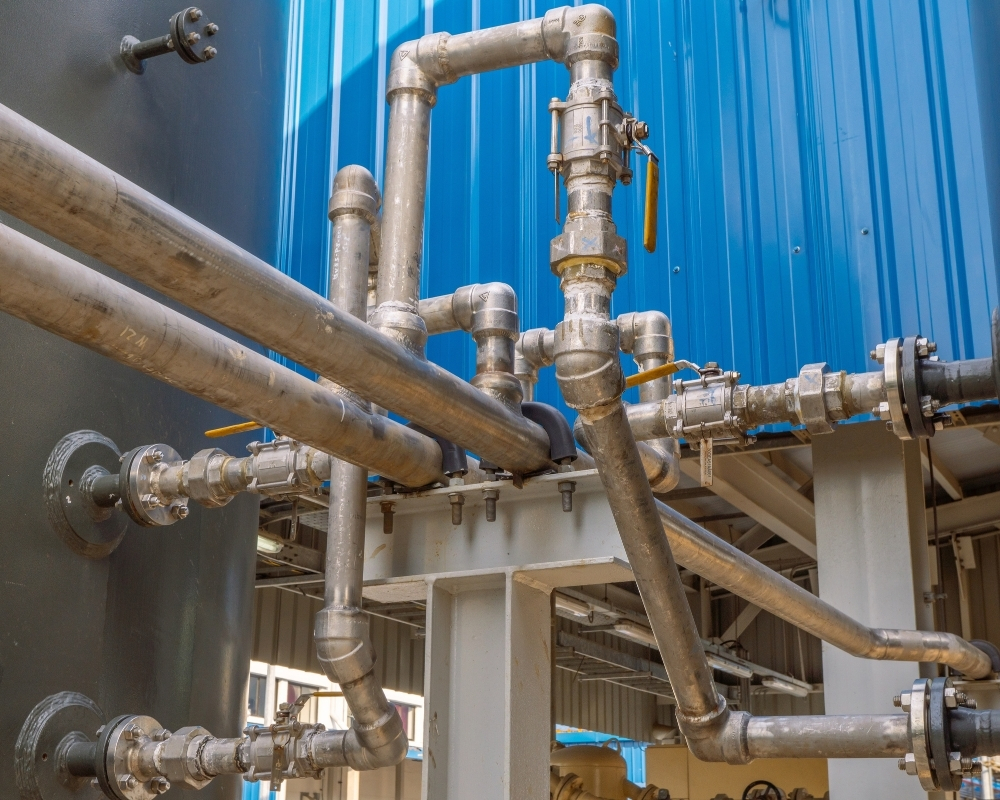
Setting compressed air header pressure is crucial to air compressor energy efficiency.
A critical factor in the efficiency and effectiveness of your compressed air system is optimizing air compressor pressure.
Set it too low, and your end-use applications will suffer. Set it too high and you’ll sacrifice air compressor energy efficiency, also reducing reliability and damaging machinery.
Plus, a stable header pressure is critical in delivering the even flows of compressed air needed in the semiconductor, healthcare, pharmaceuticals and electronics industries for sensitive applications such as pneumatic controls and robotics.

Optimizing air compressor pressure is crucial in sensitive applications such as those in the pharmaceutical industry.
We list below the five questions you need to answer to get compressed air header pressure just right. We’ll start with compressed air system design, deciding between a loop and a dead-end piping layout.
1. Do You Have a Loop or Dead-End System?
When we’re investigating a problem with compressed air header pressure, the first thing we do is to check and see if the header pipe is looped.
Unfortunately, many compressed air systems begin as a dead-end system. It’s easy to see why: someone runs a direct line from the compressor to the application and stops there. As they add applications, they simply add on to the line. But a dead-end layout will waste air, compromising air compressor energy efficiency.
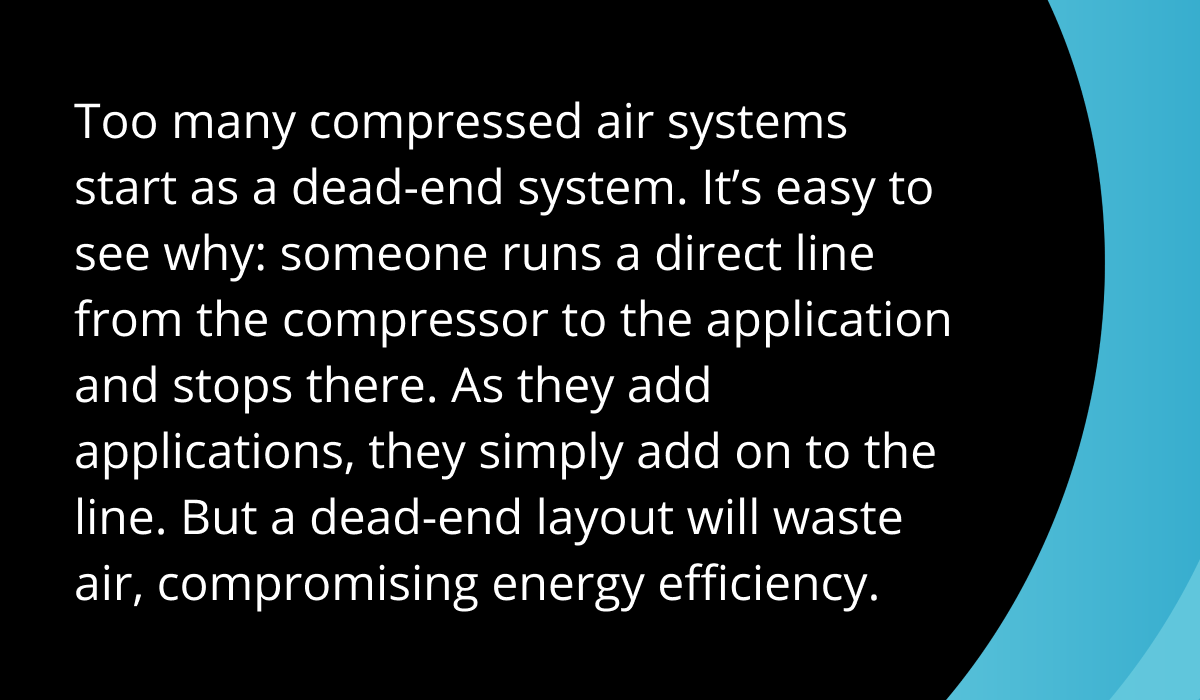
It’s much better to lay out your compressed air system design so that you have a continuous loop, with drops coming off the loop for each application. The air has two paths to follow in a loop system. Without a loop, large consumers of air could starve applications further downstream. Remember, air follows the least path of resistance.
Another aspect of compressed air system design is the addition of curves and changes in direction. Every time you change the direction of the air flow, you have a pressure drop. And you increase the likelihood of leaks.
Your goal should be to lay out your system with as few curves and bends as possible. You’ll especially want to avoid 90° angles. In reality that's almost impossible to accomplish, but do the best you can.
We talk more about compressed air system design in our blog post, “Ultimate Guide to Rotary Screw Air Compressor System Design, Part II.”

Robotics operations rely on consistent compressed air header pressure to operate efficiently.
The next question involves the sizing of those pipes and headers.
2. Are Your Header and Piping Sized Correctly?
If your end-use applications are not getting enough pressure, it may not be that your compressor is not powerful enough. It’s possible that your piping is undersized.
Properly sized piping is a critical piece of any compressed air distribution system. If piping is too small, your system will be inefficient and consume more energy. Pressure drop in air piping will overwork your compressor, causing additional wear and maintenance.
Time and again, we’ve found companies reduce pipe sizes as they move away from their compressor. So instead of the typical 2-3 PSIG reduction in pressure over 100 feet of pipe, smaller pipe sizes can cause a pressure drop in the compressor system of as much as 10-15 PSIG.
As a result, keep the pipe size the same as you move from the compressor to the end use. For more details on pipe sizing and avoiding the associated pressure drops, see our blog post, “Six Sure-Fire Ways to Slash Air Compressor Pressure Drop.”
Another consideration is that you should properly size your compressor to match your demand, taking into account elevation and other external factors that influence compressor performance.
3. Is Your Compressor Sized Correctly?
We didn’t make this the first question, even though facility managers often start with the assumption that they need a larger compressor when they’re not getting enough pressure at their end-use applications. It may sound surprising for a compressor manufacturer to say it, but that’s usually the wrong idea.
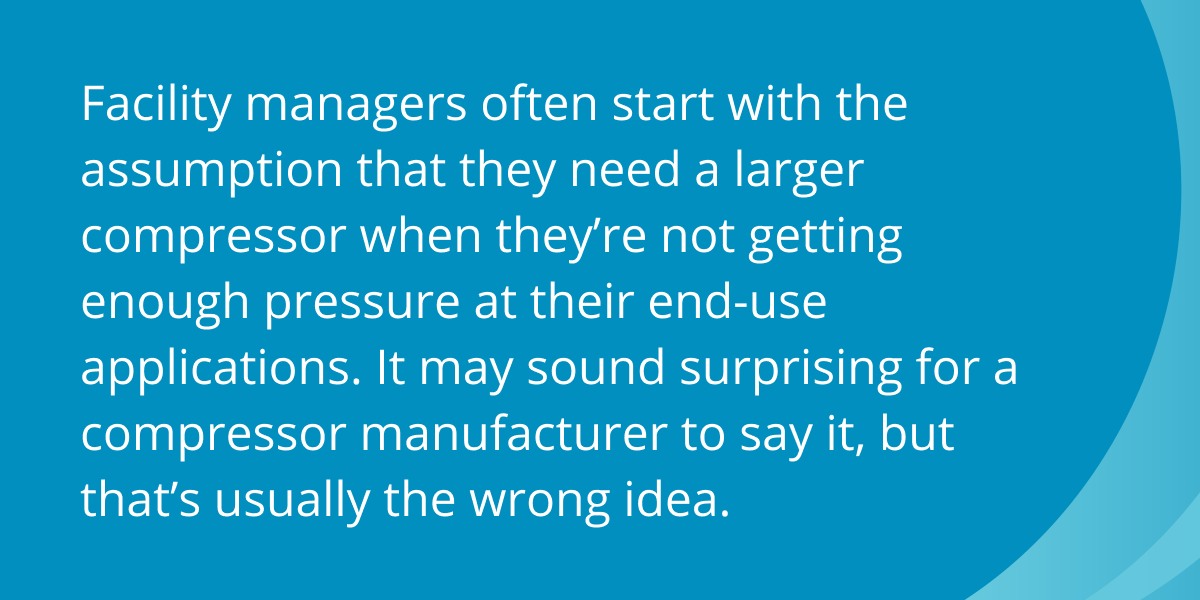
Here’s why: Because of the inverse relationship between pressure (PSIG) and flow (CFM), trying to increase the pressure at a remote end-use by boosting the pressure at your compressor probably will produce less air at the targeted application. And, most of the time, when a user says he’s not getting enough pressure to run his impact wrench, it’s a problem of flow, not pressure.
Plus, with rotary screw compressors, “too much” is just as bad as “not enough.” You waste energy and risk compressor short cycling.
The primary challenge is making sure your compressor is sized large enough to deliver the compressed air you need (see our blog post, “CFM vs. PSI: What You Need to Know to Size an Air Compressor”) but not so large that it begins rapid cycling. For more on sizing your compressor correctly, download our white paper, “Demystifying Air Compressor Sizing.”
Getting a new, bigger compressor should not be your go-to solution. Because it’s usually not the compressor size that’s the problem. It’s the other factors mentioned here.
A crucial part of operating your compressed air system efficiently is our next topic, avoiding the temptation to set your header pressure too high.
4. Is Your Header Pressure Set Too High?
Many operators set the system pressure to the level required by the tool or tools needing the most pressure. And, we get it, you don’t want complaints.
However, in most cases, those high-pressure applications make up only a fraction of your system’s applications. And that means you are over-pressurizing everything else. Significantly.
You can do a workaround, installing regulators on many of these other tools to reduce the pressure.
But that wastes energy. A lot of it. Especially if your plant needs 80 PSIG and you're compressing up to 125.
Most of the applications we serve do not need more than 85-90 PSIG in pressure. In fact, that number could even be as low as 60 PSIG.
So, if you’re pressurizing your system to 100 PSIG, 110 PSIG or 120 PSIG, you are probably wasting a lot of energy.
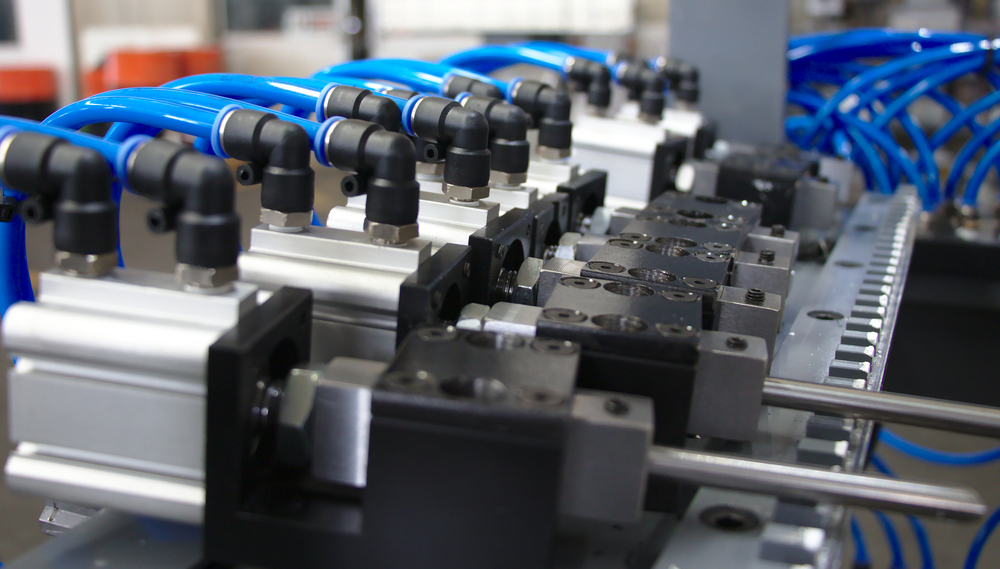
Most applications don’t need the compressed air header pressures we see in many facilities. Lowering it will save energy and reduce electricity costs.
The final issue is that you’ve set the pressure band too tight.
5. Is Your Air Compressor Pressure Band Too Tight?
Most compressors use load/no-load controls, sometimes called online/offline. With this approach, you set a load and an unload pressure, such as 115 PSIG and 125 PSIG, respectively.
That gap of 10 PSIG is called the pressure band. The goal is to prevent your compressor from loading and unloading too quickly, which can cause short or rapid cycling. Starting and stopping too often increases thrust loads, reducing bearing life. And it can exceed the maximum starts per hour on electrical components, specifically the inrush current on the motor.
But if you have two or three compressors that aren't tied into each other electronically, you could be loading at 110 PSIG and unloading at 120 PSIG on one machine. With another at 115 to 125 and the last at 120 to 130 PSIG.
That’s a lot of wasted energy, especially if your plant needs 100 PSIG and you're compressing up to 130. Remember, the rule of thumb is that for every 2 PSIG increase in pressure, energy consumption goes up by 1%.
Start by identifying the high-pressure applications. The Compressed Air Challenge even recommends serving high-pressure or remote applications with a separate, dedicated compressor.
Then, work to scale back the pressure to your other end uses. Compressed Air Best Practices notes that you should reduce the pressure band as low as possible without affecting end-use applications.
For more details on setting your pressure band correctly, read our blog post, “How Lowering the Pressure Band of Your Compressed Air System Can Save You Money.”
Local Help in Getting Air Compressor Header Pressure Where You Want It
Getting header pressure just right can be a challenge. We strongly recommend that you work with your compressed air consultant to make the adjustments that will get compressed air header pressure just right. It’s well worth the effort, helping you reduce energy use and electricity costs and boost reliability.

Your compressed air consultant can help you determine the compressed air header pressure that will be most efficient and cost-effective in your application.
We work with a nationwide network of independent distributors, who can provide on-site help and consultation as needed. These factory-trained air compression experts can service your air compressor system without a problem. And they have staff members who are skilled in advanced technology.
We partner with independent, local distributors because they offer expert guidance, faster response times and personalized support tailored to your needs. They ensure you get the right system, reliable service and quick access to parts when you need them most.
They have factory-trained technicians and a deep understanding of industrial applications, helping you maximize efficiency and minimize downtime. So, when you buy through Kaishan, you're getting more than a product—you're getting a local partner who cares about your business and wants to see it succeed.
Key Takeaways
Five questions you need to answer to get compressed air header pressure right:
- Do you have a loop or a dead-end system?
- Are your header and piping sized correctly?
- Is your compressor sized correctly?
- Is your header pressure set too high?
- Is your pressure band too tight?
Let Us Help
Setting compressed air header pressure is critical to the operation of your compressed air system and all the processes that rely on that system. If you need help finding a level that maximizes efficiency and minimizes downtime, get in touch with the experts at Kaishan. Contact us today.
Listen to the Podcast Version
System Design: Loops, Dead-Ends, and Their Impact
Alright, folks—welcome back to The Big Dog Podcast, powered by Kaishan USA! I'm Jason, and as always, I'm with Lisa. Today, we're getting into a topic that, honestly, comes up every single time I set foot in a plant: header pressure. But before we get deep into settings, let's rewind to step one...system design. Lisa, how many times have you seen a dead-end—like a straight shot from the compressor with just one way to go?It’s way too common. And I get why—someone's in a hurry, they just run a line straight to where it’s needed, and then as production grows, they keep tacking things on the end. It's quick, but, man, you end up wasting a lot of air and chasing your tail on those pressure problems.
Exactly. When you’ve got a dead-end setup, big users closer to the compressor grab all the air, and the folks further out, they’re the ones with tools that just...well, they just sputter. Loops solve a lot of misery here—they give air two paths, so it actually gets where it needs with fewer headaches.
Yeah, and when you run that loop, you can add drops for each application, instead of making one long snake. That makes balancing the system so much easier. And with loops, you’re better insulated from pressure dips—even if someone adds another line down the road.
Let me jump in—because this reminds me of a plant visit I had, oh, maybe two years back? Automotive supplier, running a dead-end and fighting low pressure at the furthest drops. Their solution was always, “Bump up the header!”—which just made the compressor work harder and still didn’t fix those farthest applications. We walked their line, and, I kid you not, a simple re-route—closing the loop with some extra pipe—completely evened out their pressure. Sometimes it’s that straightforward.
And can we talk about those curves and bends? Every sharp turn, especially those 90-degree elbows, chews up pressure and cranks up your leak risk. The more straightforward you can keep it, the better. I know you can’t always avoid ‘em, but do your best to limit those hard turns so you’re not losing air before it even gets to the tool.
Right. Air's always going to take the path of least resistance, so the more bends you throw in, the more turbulence and drop you introduce. Sure, you can’t get every layout perfect, but you don’t want those extra curves and angles if you can help it. Loop it, keep it simple—that’s rule number one when you wanna get your header pressure right from the start.
And it’s not just a theory thing—we've talked about pressure drop before in our 'Fixing Pressure Drop Problems' episode, and it keeps coming back to the basics: good layout, fewer turns, avoid dead-ends. It's worth doing right the first time. Should we move to the next piece, Jason?
Getting Sizing Right: Pipes, Headers, and Compressors
Yeah, let’s get into it. So, the next trap a lot of folks fall into: sizing. People love to blame the compressor anytime there’s pressure trouble, but honestly, it’s usually the pipes or the headers that are undersized. If you choke down pipe diameter as you get away from the compressor? You’re pretty much guaranteeing yourself pressure drop, wasted energy—the works.And it’s such a common misstep! Facilities will start with a big main, but as they add drops or run branches, they’ll size down to save a few bucks or just because that’s what’s on the truck. Next thing you know, that 2-3 PSIG drop you expect turns into 10…15 PSIG, easy. Suddenly, all those end uses just aren’t getting what the compressor’s putting out anyway.
Exactly. That’s actually one of those things we covered in our recent episode on pressure drop—if you missed it, seriously, go check it out. You want pipe sizing to stay consistent over the distance, at least as much as possible. And, while we’re at it, don’t forget about properly sizing headers too. If you shortchange the main lines, you’re just running the compressor harder for no good reason.
I’ve got a case study for this—facility kept griping about low pressure, figured they needed a new, bigger compressor. Turns out, upsizing just a handful of their branch pipes fixed it. Didn’t touch the compressor at all. Once that extra flow could actually get through the lines, all their problems disappeared. Sometimes, it really is just the piping bottlenecking you, not the machine.
Right—and I know we sound like broken records, but “bigger isn’t always better” holds true with compressors, too. People think adding a monster unit solves every issue; all it really does is rack up your energy bill and create new headaches like rapid cycling. If you oversize, you end up with a compressor that’s starting and stopping all the time, burning out bearings, and actually lowering reliability.
Plus, a lot of “pressure complaints” are actually flow issues. You try to fix flow by cranking up pressure out of habit, and all you’re doing is aggravating everything else—especially with rotary screws. There really isn’t a shortcut; get your sizing—piping and compressor—matched to your actual demand and system layout, and suddenly…most of those headaches just go away. Alright, should we dive into the nitty-gritty of pressure and pressure bands?
Dialing In Settings: Pressure, Bands, and Energy Savings
Let’s do it. Now, this is where a lot of wasted dollars sneak in—setting your header pressure and your pressure bands too high. Nearly every place I visit, they’re running way above what they need, just “to be safe”—or because that one tool out in the back corner needed 125 PSIG once back in ’09. Then everything else gets over-pressurized. Your electricity bill just keeps climbing, and your equipment's not happy about it either.I feel like every plant’s got “that tool”—and it makes everyone nervous enough to run the whole system hot. The thing is, most of your applications can make do at 85 or 90 PSIG, and a lot even lower. If you’re at 110, 120, or more, you’re basically feeding energy into the air just to let it bleed away in regulators—if you even have those. Regulators can help, but it’s not a real fix, right?
Nah, it's not. Regulators are a workaround, not a solution. And this gets into the idea of pressure “bands.” Set ‘em too tight, your compressor starts rapid cycling—on/off all day long. That’s not good for bearings, not good for motors… plus, the constant start/stop eats up more power than you’d think.
And a lot of the time, you see totally mismatched bands, especially if you’re running, like, two or three compressors that aren’t electronically synced up. One’s loading at 110, another at 115, one at 120… You’re stacking bands left and right, basically just letting compressors fight each other and burn energy. Every 2 PSIG higher costs you roughly 1% more in energy, so those numbers really add up.
I remember troubleshooting a line where they set the whole plant to 125 PSIG, all because of this ancient, rarely used impact tool at a remote station. Every other zone in the building could’ve lived happily at 90 or even 80, but nope—125 across the board. Their electricity bills were, I mean, out of sight. We isolated that remote tool with its own small compressor, scaled everything else back, and just like that—real money saved, and no more reliability headaches.
That’s honestly the best kind of fix. And hey, sometimes the answer is creating separate pressure zones or just dialing everything back to what you really need. If you’re not sure, don’t just crank the dials—get with a local expert. They’ll help you find that sweet spot for every application. And like we’ve said before, a little advice upfront is nothing compared to what you’ll spend on wasted power and repairs over time.
Absolutely. Header pressure isn’t set-and-forget stuff—it’s where you find real gains if you take the time to get it right. And do yourself a favor; partner up with your local distributor or trusted techs. They've seen it all, and they’ll make dialing in your settings a whole lot less painful.
So, that wraps it for today—get your layout right, size everything to match, and don’t fall for the “bigger and higher pressure is better” trap. There’s real savings and better reliability when you tune your system to your actual needs. Thanks for joining us on The Big Dog Podcast. Jason, any last thoughts?
Nope, I think that’s it—you said it all, Lisa. Appreciate having you in the shop again. We’ll be back soon with another episode, so stay sharp and keep those systems humming. See you next time.
See you, Jason. And thanks to everyone for listening. If you're struggling with header pressure, don’t be shy—reach out and let’s fix it the right way. Bye, everyone!
Random stat or
customer quote
textXXtext
text

